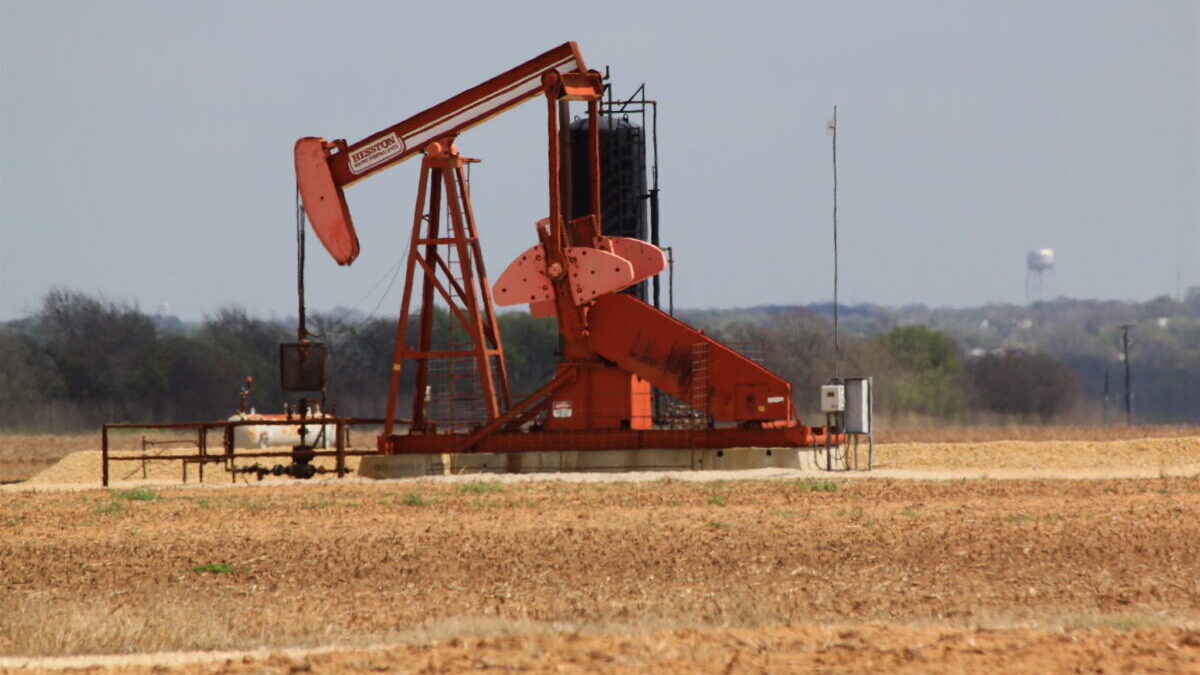President Joe Biden announced Thursday an “unprecedented” release from the Strategic Petroleum Reserves maintained to have supplies during emergencies. Instead of unleashing American energy production to counter lockdowns’ disruption in global supply chains, 1 million barrels of crude per day will be released from the nation’s emergency stockpile for the next six months.
“The world has never had a release of oil reserves at this 1 million per day rate for this length of time,” the White House announced in a Thursday fact sheet. “This record release will provide a historic amount of supply to serve as bridge until the end of the year when domestic production ramps up.”
Absent a radical shift in the administration’s energy policy, however, there’s no bridge in sight. Americans are coping with the highest gas prices ever recorded, compounded by inflation, with the national average reaching $4.33 per gallon earlier this month, according to an AAA tracker. On Thursday, a Federal Reserve analysis recorded inflation at a four-decade high, which followed a survey from Salary Finance out Wednesday reporting 1 in 5 Americans are running out of cash between paychecks.
After 14 months actively suppressing oil and gas production in the name of climate change, Russia’s invasion of Ukraine hampered the Oval Office’s diplomatic menu as the United States enthusiastically forfeited its energy independence. In the run-up to its full-scale invasion, Russia supplied more than 10 percent of the world’s crude but is now throttled by western sanctions against the primary source of revenue for the Kremlin’s war machine. Following the United States’s stint as an energy-independent net exporter of oil under President Donald Trump in 2018, the Energy Information Administration (EIA) forecast the United States will revert to its role as a net importer this year under Biden.
Biden’s decision to tap the strategic oil reserves marks the third time the president opted to artificially bring down high gas prices with emergency stockpiles and no plan to make up the difference. In November, Biden also harnessed the stockpile to curb prices at the pump going into the Thanksgiving holiday. Gas prices dipped slightly following the 50-million-barrel release only to remain high a month later, hovering around $3.40 in January. Within two months, prices that were rising steadily even prior to Russia’s invasion eclipsed their prior high of $4.11 per gallon in 2008.
President Biden deployed the strategic oil stockpile for a second time less than a month ago, days after Russia launched its assault on Ukraine. In his second address to a joint session of Congress, Biden touted the release of 30 million barrels from U.S. reserves while doubling down on the same low-energy agenda that spiked gas prices upon his inauguration more than a year ago:
Let’s provide investments and tax credits to weatherize your homes and businesses to be energy efficient and you get a tax credit; double America’s clean energy production in solar, wind, and so much more; lower the price of electric vehicles, saving you another $80 a month because you’ll never have to pay at the gas pump again.
Biden repeated the talking point about electric cars upon his latest deployment of the nation’s oil reserves Thursday and claimed there is “nothing in the way” of companies ramping up production.
“A typical driver will save about $80 a month from not having to pay gas at the pump,” Biden said in encouraging Americans to buy coal-powered electric cars, despite the average cost of an electric vehicle being north of $56,400, according to the Kelly Blue Book in December. That’s $5,000 more than an entry-level luxury car, averaging more than $51,300 in November, which is hardly affordable for Americans drowning under inflation.
Authorized to maintain 714 million barrels of crude, the U.S. Department of Energy reported the stockpile held more than 695 million barrels in 2011. After the completion of Biden’s latest drawdown in six months, the emergency reserves will be reduced to about two-thirds of their maximum capacity with 263 million barrels released under the current White House.
Repeated use of U.S. reserves without a plan to permanently increase U.S. oil and gas production was described by Montana Republican Sen. Steve Daines as a “band-aid on [a] bullet wound.” It showcases an administration dedicated to pulling every lever possible to avoid allowing American producers to ramp up production to meet the nation’s energy needs. According to the EIA, Americans consumed an average of nearly 20 million barrels of oil a day, putting the White House release of 1 million barrels per day into perspective.
Instead of opening American energy projects the administration has shut down such as drilling in the Arctic National Wildlife Refuge and permits for the Keystone XL Pipeline, Biden has continued to harass the oil and gas industry, and suppress production in the process. Just this week, Bloomberg reported the Biden administration is planning to delay oil leases in the Gulf of Mexico for a third consecutive year, signaling to the industry that the White House has no plans to endorse long-term production to reclaim energy independence.
The administration also repeated a popular left-wing talking point to complain that oil and gas producers were sitting on 9,000 drilling permits left unused. Those 9,000 permits, however, don’t mean producers are sitting idle with rights to extract untapped reserves at the flip of a switch, which would be corporate malpractice considering the current profitability.
Rights of Way (ROW) permitting, which can take years to approve, is still required, along with the billions in capital needed to drill. Uncertainty about operations on federal lands, prompted by the White House which delayed lease sales again in February, has held back the investment needed to ramp up operations. At the same time, another 4,600 permits to drill are awaiting approval from the Interior Department’s Bureau of Land Management run by an ecoterrorist.
Before pumping billions of dollars worth of capital and labor to drill, producers need signals of certainty from the White House that economically sensible drilling may proceed without sudden interruption. So far, however, President Biden has done everything but, while scapegoating Russian President Vladimir Putin, rival oil producers, and the industry itself for gas prices that started to soar from the very day Biden launched his assault on American production — inauguration day.
“President Biden’s decision to release more oil from the Strategic Petroleum Reserve is just a larger band-aid for the wounds inflicted on energy production by the Biden administration,” said Myron Ebell, the director of the Center for Energy and Environment at the Competitive Enterprise Institute. “The Biden administration is still using every regulatory tool to slow oil and gas production on federal lands and offshore areas, delay pipeline and infrastructure approvals, and bully banks into dropping investments in new production.”
On Thursday, House Democrats endorsed the White House energy agenda, blocking the American Energy Independence from Russia Act for the fourth time.









